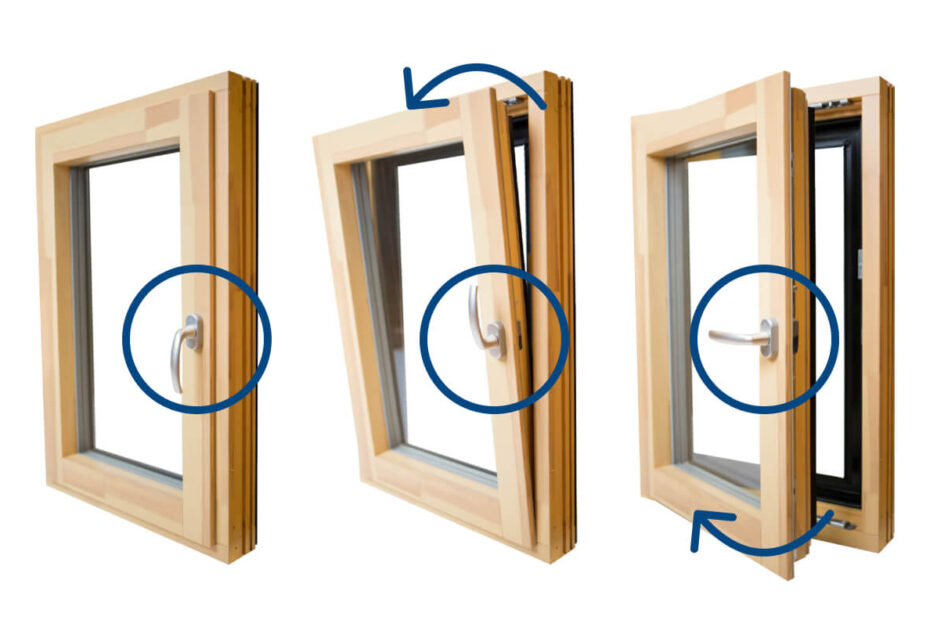When it comes to windows, there are myriad styles available, each offering its unique set of features and advantages. Among these, European Tilt-Turn windows and American Outswing Casement windows stand as particularly popular choices, each widely adopted in their respective geographic areas.
This article aims to shed light on the unique benefits of the European Tilt-Turn windows, juxtaposing them with the more conventional American Outswing Casement windows.
The European Tilt-Turn Windows
With their unique dual functionality, European Tilt-Turn windows provide homeowners the option to swing the window in like a door (turn) or tilt the top of the sash into the room for ventilation (tilt). This dual-function design is made possible by specialized hardware that allows the window to pivot on a horizontal and vertical axis.
Benefits:
- Versatility: The tilt-and-turn design provides two opening options, allowing for increased control over ventilation and security. In the tilt position, the window allows for secure, draft-free ventilation. The turn position allows for maximum ventilation and egress.
- Energy Efficiency: European Tilt-Turn windows are often designed to meet rigorous energy-efficiency standards, providing excellent insulation due to their superior sealing capabilities when closed. This can significantly reduce heating and cooling costs.
- Maintenance: These windows are easy to clean from the inside due to their unique hinge mechanism, a feature particularly beneficial for multi-story buildings where external window cleaning can be a challenge.
- Security: The multipoint locking system provides a high level of security against intrusion.
The American Outswing Casement Windows
American Outswing Casement windows, a traditional choice in the U.S., are hinged at the sides and swing outwards. They are operated with a crank handle and offer full top-to-bottom ventilation.
Benefits:
- Unobstructed Views: These windows, due to their design, offer a large and unobstructed view of the outside.
- Full Ventilation: The outswing design allows for maximum ventilation as the entire window can be opened, unlike double-hung windows.
- Screen Compatibility: American casement windows are typically fitted with screens on the interior side, protecting the home from bugs and debris when the window is open.
Comparative Analysis
While both window styles have their unique advantages, a few aspects set them apart significantly:
- Ventilation: While both windows offer excellent ventilation, the Tilt-Turn provides more options for controlled ventilation. The tilt function provides secure, draft-free ventilation, ideal for when small amounts of air circulation are required.
- Energy Efficiency: European Tilt-Turn windows often outperform American Casement windows in energy efficiency due to their superior sealing capabilities, which can lead to cost savings over time.
- Maintenance: Tilt-Turn windows are easier to clean from the inside, a significant advantage for windows on higher floors.
- Screen Placement: American Casement windows typically have screens on the interior, which can be more visually pleasing and less exposed to the elements. However, they can interfere with the use of window treatments.
Conclusion
Both European Tilt-Turn and American Outswing Casement windows offer unique benefits, and the choice between them largely depends on individual preferences, the architectural style of the home, and specific requirements such as ventilation, security, and energy efficiency. European Tilt-Turn windows, with their unique blend of versatility, security, and energy efficiency, offer a compelling alternative to the conventional American Outswing Casement windows. Ultimately, the decision comes down to the homeowner’s personal preferences and the specific needs of the property.
